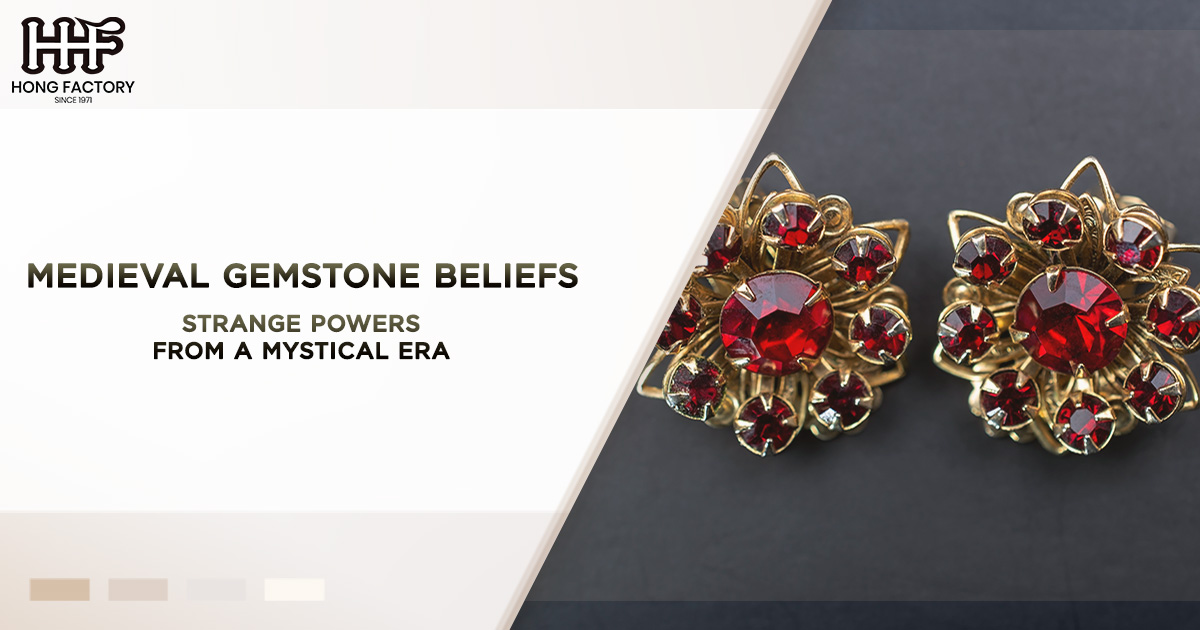Throughout the medieval period, gemstones were not merely adornments; they were believed to hold powerful, mystical properties that could influence almost every aspect of life. From medical uses to protective charms and symbols of royal authority, these historical gems were central to many ancient beliefs. This article explores the fascinating roles these stones played in medieval society, contrasted with how they are perceived in the modern era.
Medical Uses
In medieval times, the line between magic and science was often blurred, and gemstones were frequently employed in the field of medicine. Physicians and apothecaries believed that specific stones could cure ailments and heal the sick. For instance, amethysts were thought to prevent intoxication and promote clarity of mind. This belief in the amethyst’s power was so strong that medieval drinkers would often carve goblets from the stone to ward off drunkenness.
Emeralds were believed to have a calming effect on the heart and were prescribed to soothe emotional turmoil and prevent panic attacks. Similarly, rubies were associated with vitality and were thought to boost the wearer’s energy levels, thus promoting good health and longevity. The medieval Lapidary, a guide to gemstones, often suggested using powdered gems mixed with other substances as a treatment regimen.
These ancient beliefs in the healing powers of historical gems were deeply embedded in the cultural fabric of the time. Although modern science has debunked most of these claims, the allure of gemstones and their supposed medical benefits persists in some alternative healing practices today.
Protection Beliefs
Gemstones were not only considered tools for healing but also powerful talismans for protection. They were believed to provide defense against both physical and spiritual threats. Many people in medieval society wore them as amulets or embedded them into armor and weapons to harness their protective qualities.
The sapphire, for instance, was highly valued for its ability to protect against envy and harm. It was often used by clergy and nobility to safeguard their chastity and ward off negative influences. On the other hand, the diamond’s hardness symbolized invincibility, making it a popular choice for warriors who believed it could make them undefeatable in battle.
Another fascinating aspect of gemstone beliefs was the idea that different stones could counteract specific evils. Turquoise was believed to protect against poisoning, while garnets were thought to prevent nightmares and ensure a safe journey when traveling. The intricate network of protective beliefs surrounding these historical gems reveals how ancient societies sought to find comfort and security in the mystical properties attributed to these stones.
Royal Connections
Gemstones were intrinsically linked with royalty during the medieval era, serving as symbols of power, wealth, and divine right. Kings and queens adorned themselves with lavish jewels, not purely for their aesthetic appeal but because these stones were believed to confer authority and legitimacy.
The crown jewels of many medieval monarchs were encrusted with sapphires, rubies, and emeralds, chosen not only for their beauty but for the specific powers they were thought to imbue. For instance, it was believed that emeralds could enhance a ruler’s eloquence and foresight, vital traits for maintaining a stable reign.
Furthermore, gemstones were often used in royal insignia and regalia. They were seen as a link between the earthly and the divine, suggesting that monarchs were appointed by God himself. This notion was so pervasive that the gifting of gemstones often played a significant role in diplomatic relations and alliances, their exchange serving as a symbol of trust and mutual respect.
Modern Perspective
Today, while the mystical attributes once ascribed to gemstones are largely considered remnants of a bygone era, their appeal endures. Modern appreciation of gemstones tends to focus on their beauty, rarity, and physical properties rather than their supposed magical or protective qualities. However, certain facets of ancient beliefs have found a place in contemporary culture.
The concept of birthstones, for instance, has roots in ancient and medieval gemstone beliefs. Though they are now more associated with personal identity and celebration, their origins are linked to ancient traditions that assigned specific stones to particular times of the year, believing they could influence one’s fate or fortune.
Similarly, the revival of interest in alternative and holistic healing practices has brought some of these ancient beliefs back into the spotlight. Crystals and gemstones are often used in modern spiritual practices, from promoting chakra alignment to providing emotional support.
While scientific scrutiny has dismissed many of the medieval claims about gemstones as unsubstantiated, the enduring fascination with these historical gems reflects a deep-seated human desire to believe in the mystical and the magical. The blend of historical significance, aesthetic appeal, and the rich tapestry of ancient beliefs ensure that gemstones continue to captivate the human imagination.
Conclusion
The medieval era was a time of enchantment and wonder, where the boundaries between the known and the mystical were fluid, and gemstones were imbued with powers that fascinated and influenced people’s lives. From their use in medicine to their role as protective amulets and symbols of royal power, these historical gems bridged the earthly and the divine.
Even today, in our modern world, gemstones retain a special place in culture and imagination. Whether through their historical connections, their enduring beauty, or the spiritual qualities some still attribute to them, the legacy of medieval gemstone beliefs continues to resonate. These stones, steeped in ancient beliefs, continue to sparkle with the strange powers of a mystical era, captivating and inspiring us all.









